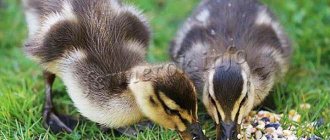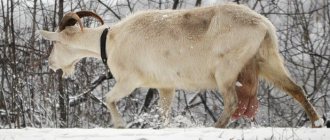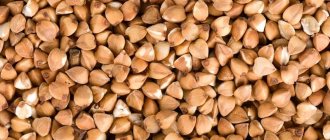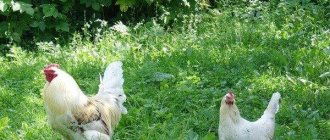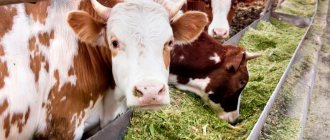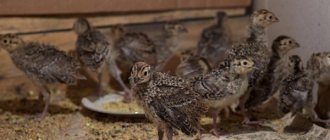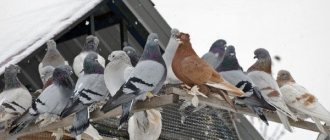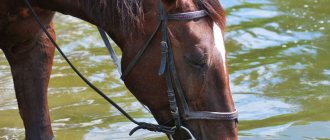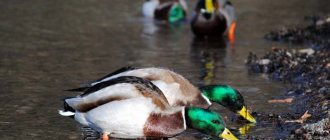The basis of the diet of wild and domesticated birds is food of plant origin, as well as small insects and their larvae, fish fry, amphibians and even mollusks. For domesticated birds, a balanced diet is very important - overfeeding, underfeeding or low-quality, unsuitable food can cause serious digestive problems and even lead to death.
Swans feeding in nature
What do swans eat in natural conditions?
In nature, they live in open or partially overgrown bodies of water - lakes, rivers, and occasionally in swamps. Most of them fly away to spend the winter in warm regions, where the water does not freeze even in winter. Species living in the Caspian Sea and the southern regions of Eurasia do not fly away for the winter.
In nature, swans live in open or partially overgrown bodies of water.
What eats in the water
Favorite food is roots and green parts of aquatic plants, duckweed, small invertebrates - mollusks, aquatic donkeys. It can stick its head under water and use its beak to catch passing fish and frogs. The depth of the dive reaches 90 cm due to the long neck, but the back half of the body remains on the surface, like a duck.
Swans dive for food
The birds take a beakful of silt and strain it. From the remaining thicket, the edible is separated from the inedible with the tongue, the unnecessary is spat out, and the useful - plants and animals - are eaten. The chicks catch small crustaceans, snails, and daphnia in shallow water.
Video - Feeding swans in the wild
What to eat on land
On land, it nibbles grass, eats grains, and does not disdain worms, larvae, shells, and lizards. Chicks prefer protein-rich animal foods.
Chicks independently find food on the shore
During molting, an adult eats up to 4 kg of plants per day. He has a good appetite: to maintain shape, he needs to eat up to 25% of his own body weight per day. Under stress (sharp change in weather, illness, death of a partner, change of habitat), appetite increases.
Swans eat grain in shallow water
Features of nutrition of different types
What swans eat in the wild depends largely on the type and location of nesting. Small swans, nesting in northern latitudes, are excellent fishermen. Due to the frequent lack of natural vegetation, they became adept at catching fish and crustaceans, mollusks, and amphibians. Birds not only eat frogs, but can also catch a small snake.
Swan grazing on the shore
On occasion, whoopers and mute mutes will not miss the opportunity to feast on potatoes, corn, and grain crops in agricultural fields. If there are rural fields near the nesting sites, the birds will make frequent raids.
Mutes prefer only plant foods; they practically do not eat fish or frogs. Even if food is scarce, birds may prefer fasting to animal food.
Australian black swans are also vegetarians. If there is not enough plant food, the birds fly to a new place of residence or feeding grounds. The black swan eats fry of fish, amphibians and other animal food only on rare occasions.
The swan caught the gosling
Feeding swans: why, how and when
It is recommended to feed only at low temperatures (from -15°C and below) or in case of illness or injury. If in winter a bird sits on the ice with its head hidden under its wing, and ice or drizzle appears on its neck, then most likely it is sick, injured or hypothermic.
A healthy bird accumulates about 20% of its body weight by winter, so it is not afraid of frost. Secretions from the coccygeal gland lubricate the feathers and prevent them from getting wet, subcutaneous fat warms and gives strength even with insufficient nutrition in winter.
Swan plumage does not get wet in icy water
In winter, swans living on a pond are fed by throwing food directly onto the ice, into the water (wormwood) or from a basin. In the warm season, they prefer plant foods - greens, finely chopped beets, carrots and cabbage, boiled potatoes, and corn leaves. In cold weather, you need more high-calorie feed - grains.
Even in winter, the swan rests with its head hidden under its wing.
Feeding swans in winter: advice from zoologists
A healthy swan will not stay in a pond if it cannot find food in it for 3-4 days. He may not eat for several days even in winter, this will not affect his health. If he sees that the pond is completely frozen or there is no food in it, he flies to a more suitable place.
In the wild, you can feed only sick, wounded birds or in very cold weather.
The swan's beak froze due to severe frost
In severe frosts, swans spend more energy maintaining body temperature, so they are given grains:
- oats or oatmeal;
- wheat;
- millet;
- barley (barley).
Winter feeding on the city beach
The cereals or mixture are steamed as follows:
- Place all the grain in a large container (bowl, bucket, basin).
- Fill it with clean hot water.
- Leave for 3-4 hours at room temperature.
If you don’t want to steam, but rather germinate grain:
- Place all the grain in a large container (bowl, bucket, basin).
- Fill with clean cold water.
- Leave for 11-16 hours at room temperature.
How to feed swans living near humans
Swans easily get used to humans, so they take root well in nature reserves, wildlife sanctuaries, protected areas and zoos. They can often be found in city gardens and parks equipped with ponds.
In some parks and private farms, they make a floating house on the water or put straw on the shore for rest and food.
Mutes in the city park
Mute birds and whoopers living near humans eat everything that is offered. The common belief that they can be fed with bread and rolls is erroneous and leads to the death of hundreds of birds every year. In fact, spoiled bread is dangerous - moldy, damaged by fungi or pests. Even good bread can cause illness or death of chicks, so young animals should not be fed or even fed with it. Adults can be given some white bread by throwing it into water.
Swans equally love plant foods from water bodies and land. In the southern regions, corn and potato residues are eaten after harvesting. Mute loves small fish, snails, river and lake mollusks, crustaceans, tadpoles and frogs.
Plants are the basis of a swan's diet
From this article you will learn how to keep a black swan in a private household, how to breed and how to feed these graceful birds.
What to feed swans on a backyard farm
In the household, the main part of their diet is plants. Animal feed makes up no more than 20% of the daily ration, grains - about 10%. Adults are fed twice a day, morning and evening.
Summer diet of adult swans
In summer, instead of vegetables, they give finely chopped grass - chaff. In addition to food, swans should always have free access to a pond with clean water and plants - aquatic or land, since the basis of their diet is grass.
In summer, the main food is greens
An approximate summer diet for adult birds consists of:
- Sliced white bread, bran, millet or barley - only 250 g;
- Minced meat (meat or fish) – only 230 g;
- Green feed (grass, lettuce) – 0.5 kg;
- Mineral nutrition (chalk, bone meal) – 20 g.
Winter menu
The winter diet differs from the summer diet - it does not contain green food, but contains more grains. The smaller amount of fish or minced meat is explained by the fact that in natural conditions in winter it is difficult for birds to catch fish, and ground protein food - worms, mollusks and small animals - is hidden under deep snow. In winter, swans are accustomed to eating less animal food, but more long-lasting carbohydrates, which provide them with energy and warmth for a long time.
In winter you need more grains to keep you warm
Winter diet of an adult.
- Sliced white bread, barley, oats, millet or bran – 700 g;
- Minced meat (meat or fish) – 20 g.
- Root vegetables – 300 g.
- Mineral fertilizing – 20 g.
Do-it-yourself compound feed
When raising swans on a personal yard or farm, they use homemade feed, because commercial feed is not produced for them. It is better not to use feed for chickens, geese, turkeys, quails, ducks, because they have different needs for nutrients, minerals and vitamins.
Do-it-yourself compound feed
Daily diet for adult swans
How to prepare feed:
- Finely chop vegetables, herbs, root vegetables, and bread.
- Mix all ingredients in a large food container (bowl, enamel basin, bucket, pan).
- Add water to form a semi-liquid mixture.
Vitamins and minerals for swans
What to feed swans on a farm
The diet of chicks raised in captivity differs from that of adults - all components are chopped finer, the protein content is higher. Its main components:
- millet porridge;
- chopped hard-boiled eggs;
- minced fish;
- minced meat.
Female swan hatches chicks
Dairy products are very useful for chicks - yogurt, cottage cheese, kefir, yogurt. They find plant food in the pond themselves or with the help of their parents.
Before feeding, the fish (in the form of minced meat) is mixed with cereals and diluted with water until a moist slurry is obtained. No more than 10% of the mass of the finished mixture is added to minced fish.
Chicks on the shore of the pond
For adults and young animals, minced meat can be replaced with meat and bone meal in the amount of 4-7% of the daily feed volume.
Approximate diet of swan chicks
Diet of young animals
The diet of young birds is slightly different from that of adult birds. A female with cubs needs more balanced and comprehensive feeding. Why? For development and growth, young swans need more nutrients. Otherwise, you can end up with a bird with poor feathers, weak, with developmental problems and unable to reproduce. What you can and cannot feed chicks directly depends on their age.
Approximate daily ration of a swan chick in grams:
| Type of food / age of the chick | 1-10 days | 11-20 days | 21-30 days | 31-60 days | 61-90 days |
| Wheat or barley bran | 4,5 | 10 | 12 | 12 | 14 |
| Meat or meat and bone meal | 1 | 1,5 | 4 | 20 | 15 |
| Fish meal | 1,5 | 2,5 | 5 | 7,5 | 10 |
| Feed yeast | 1,5 | 1,5 | 2,5 | 2,5 | 3 |
| Chalk | 1 | 1,5 | 2 | 4,5 | |
| Salt | 0,05 | 0,08 | 0,10 | 0,10 | 1,5 |
| Millet | 5 | 10 | 17 | ||
| Sprouted millet | 75 | 80 | 85 | ||
| Boiled chicken eggs | 5 | 15 | |||
| Skim milk | 80 | ||||
| Cottage cheese | 5,5 | 8,5 | 10 | 25 | 20 |
| Fresh grass | 10 | 20 | 25 | 40 | 90 |
| Carrot | 5 | 20 | |||
| Beet | 10 | 25 | 70 | 75 | |
| Pumpkin | 10 | 15 | 70 | 80 |
What not to feed swans
Chicks should not be fed bread - it causes indigestion and often causes their death. It can be given to adults in small quantities, white and black, without mold, fungal infections and pests.
Don't feed swans bread
Video - Environmentalists ask not to feed swans bread
Dry grain
Swans cannot eat dry grain - it is too hard, dense, scratches the walls of the stomach and is not digested in the intestines. For this reason, all grain feeds for them must be filled with hot water (steamed) or sprouted in cold water for 11-15 hours. The food is placed in a basin or large container with clean and fresh water - they strain it themselves, allow the excess liquid to drain and eat it.
Is it possible to give bread
Swans can eat almost all types of grains, as well as bran and rolled oats. However, whether it is possible to feed swans bread, like a grain-containing product, is a controversial issue. In city parks and zoos you can see a swan happily eating the offered bread and crackers, but ornithologists and veterinarians have not come to a consensus about the dangers or benefits of this product. Fresh bread in small quantities will not cause harm, but the bread must be soaked in water. Swans can be fed both black and white bread - the main thing is not to feed more than a few pieces. Bread with mold, dry, stale can cause digestive problems and poisoning.
Bread is undesirable for swans
How to feed a sick swan
It happens that a swan swallowed fishing weights instead of small stones or was hunted, and lead shot remains in its body. In the goiter, pieces of lead rub against each other, its particles enter the stomach, from there into the intestines and into the blood. Lead causes acute poisoning in birds.
When lead poisoning occurs, the droppings become watery and green, they become weak, move little, eat poorly, and their feathers become ruffled.
A healthy swan is active and eats most of the time
Patients are given honey diluted in water in a 1:1 ratio. A glucose solution at a concentration of 5% helps well. One adult bird needs 50 ml per day.
Chicks sick with salmonellosis are fed curdled milk or other fermented milk products; a little potassium permanganate (until a light pink color) or honey (until a sweetish taste appears) is poured into the drinking water.
Any medications (medicines, vitamins, minerals) are given internally in a mixture with small fish or minced meat.
Swans in winter: when saving, do no harm!
The Kaliningrad Zoo again began to receive calls from residents of Kaliningrad, who, on the eve of winter, were concerned about the fate of the swans living on the city lakes. This situation repeats itself from year to year. We have collected the most frequently asked questions and tried to answer them in order to explain what to do when meeting swans and whether all birds need to be “rescued” in winter.
Why didn't the swans fly away with their relatives?
"Decreased migratory instinct."
This is the scientific name for the reluctance of birds to fly to warmer regions with the onset of cold weather. Scientists see several reasons for this behavior. Firstly, winters in the Kaliningrad region are becoming warmer every year. The reservoirs do not freeze and swans always have access to their main food - algae. Secondly, swans attract a huge number of people who, with the best intentions, feed them. Naturally, the birds get used to humans and absolutely do not want to part with their “grain places” on city lakes. IMPORTANT TO REMEMBER! By feeding swans, humans do them a disservice. Birds continue to wait for their “breadwinners” even with the onset of severe frosts, however, they, as a rule, prefer not to go outside again. The fed birds suffer, but cannot immediately find their bearings and fly to unfrozen bodies of water. As a result, some get sick and even die. What do swans eat in winter?
The main food of waterfowl is algae. And as long as the reservoir is not frozen, the swans have access to food. With the onset of severe frosts, many swans move to the ice-free sea coast, where they safely feed until spring.
What can you feed swans in winter?
Ideally, it is better not to feed swans at all (see point 1).
But if you are going to feed, then you need to do it in such a way as not to harm the birds. 1. Swans should absolutely not be fed black bread! It causes fermentation in the stomach and, as a result, gastrointestinal upset, weakness, and illness. White bread is acceptable in the absence of other food, but in extremely limited quantities! 2. Swans should absolutely not be fed moldy or sour bread! For birds, as for people, spoiled food is deadly. 3. In cold weather, swans can be fed raw or lightly boiled shredded vegetables: cabbage, carrots, potatoes, as well as steamed rice or millet. However, in severe frost, all this food freezes to the ice. In this case, a grain mixture of wheat, oats and barley or a special feed for birds that does not contain salt is suitable as feed. IMPORTANT TO REMEMBER! The swan's digestive system is designed in such a way that it must wash down its food. Therefore, food should be thrown into the water or onto the shore at the very edge of the water. As a last resort - on the ice. How can I determine if birds need my help?
A bird needs human help if: - there are obvious signs of injury or damage, - the bird is lying on the ice and its plumage is covered with a crust of ice or icicles.
In all other cases, the bird most likely does not need human help. Moreover, swans are able to safely tolerate temperatures down to -15 degrees. In this case, the bird spends all its energy on saving energy and maintaining heat. She chooses a safe place on the ice away from the shore, lies down and rests. The worst thing you can do in this situation is to drive her away from her home. IMPORTANT TO REMEMBER! If a bird has fishing line stuck in its beak, don't cut it! A weight or hook can be attached to the fishing line. If you cut the line, it will be impossible to pull it out. In this case, it is better to entrust the release of the bird to veterinarians. Can I “surrender” a swan to the zoo?
The Kaliningrad Zoo does not accept swans for the following reasons: 1. according to Art. 4 of the Federal Law “On Animal World”, wild animals and birds are the property of the state. Their removal from nature is possible only with the permission of the competent state authorities. authorities, for example, Rosprirodnadzor. Violation of this requirement entails the imposition on a legal entity of an administrative fine of 10 to 20,000 rubles, 2. the adoption of animals from the wild is prohibited by veterinary standards, 3. The Kaliningrad Zoo does not have sufficient space and conditions to keep a large number of swans. Especially considering the fact that every year they try to “place” from 10 to 20 birds here.
Swan recipes for delicious dishes
To properly salt minced meat (for those who don’t like to taste raw meat): take 1 kg. minced meat 2 level teaspoons of salt.
To make the minced meat juicy : add sugar. For 1 kg. minced meat about 1 teaspoon of sugar and your cutlets, meatballs, dumplings, and other minced meat dishes will always be surprisingly juicy. And for juiciness, be sure to add 1 tsp for the same weight of minced meat. with a heap of gelatin. Gelatin will not only keep your cutlets juicy, but will also enrich your body with collagen. And the value of this substance for the beauty and youth of the body is known to everyone.
To cook the beef faster : add 1 tablespoon of vodka to 2 liters of broth at the beginning of cooking, after boiling. And instead of the three to four hours required for cooking, you will need half as much time. I also found a very interesting option - adding banana peels when cooking meat. Try it, the meat turns out unusually aromatic, tasty and also cooks faster.
To help the beans cook faster : Some people recommend adding baking soda, but not everyone likes the soda taste. I use another method: when the water and beans boil, drain, add cold water and put on the fire again, bring to a boil. Repeat this process three times. After the third transfusion, we continue to cook until done. The beans will cook faster and taste better. Don’t forget that you need to salt the beans at the end of cooking, 20 minutes before the end.
To make a delicious stew : try adding a few cherry leaves when stewing - an extraordinary taste and aroma is guaranteed.
To prepare delicious fried liver : it is easier to cut the liver into portions when it is slightly frozen. After slicing, sprinkle the liver generously with baking soda and leave for at least 30 minutes, preferably an hour. Then rinse thoroughly under running water. You need to fry the liver for a short time, 2 - 3 minutes on each side, until the blood stops coming out. It is best to salt and pepper the liver in a frying pan while frying. After frying, add 2 - 3 tablespoons of milk to the pan with the liver and cover with a lid, leaving on the fire for 2 - 3 minutes until the milk evaporates. After such simple manipulations, you are guaranteed to receive a delicious and tender ready-made fried liver.
What to feed the swans?
Swans living in the wild and birds living in park ponds eat the same food. There is no need to feed them. They themselves will find the food they need on the pond or on the shore. Park visitors often give the birds bread. Swans eat it willingly. Experts warn that feeding birds bread is not recommended. This can cause gastrointestinal upset. Dark bread is strictly prohibited for them. White is given in small quantities. They throw it into the water to soak it. Bread should not be given to chicks. What do swans eat? What to feed them at home?
Natural conditions
Swans always choose shallow bodies of water with abundant vegetation. This is vital for them. They build nests among thick tall grass, and numerous algae become their food. They are easier to get in shallow water. The swan is capable of diving to a depth of 90 cm. Using its long neck, it can reach the bottom, tearing off the stems and leaves of plants. In addition to algae, birds also find other food in the pond:
- small fish;
- caviar;
- bloodworm;
- shellfish;
- Small crustaceans are a special treat.
During the molting period, swans require more vitamins and mineral salts, so they can go ashore in search of nutritious food. On land they move slowly, waddling from one side to the other. When outside the reservoir, birds become inactive, which makes them vulnerable. They cannot take off from the ground or all their movements are slow and clumsy. On the shore they eat green grass rich in vitamins. The following vegetation is preferable for swans:
- clover;
- alfalfa;
- dandelions;
- plantain;
- sometimes a flock can land on a field with cereal plants; birds love oats, wheat, barley;
- Corn is useful for them, both young shoots and mature cobs.
The flock rarely grazes in the fields. If this happens, then she just needs to be scared. Killing swans is prohibited. They are listed in the Red Book. Unfortunately, having experienced stress, they can leave not only the field, but also the pond. Ornithologists recommend feeding the birds a little by scattering grain on the shore. This will help preserve the crops.
You should be careful with feeding. Constantly helping birds and looking for food is not recommended. They quickly get used to people and new conditions. The swans will simply stop looking for food, hoping for human help. There is another situation where you can bring them extra food. This is winter time, frost -15 C. For some reason, a flock or individual individuals may not migrate and remain in the reservoir.
In winter, the bird becomes inactive. She moves slowly in the ice hole, saving energy and body heat. You can expand it with wormwood and place food on the ice. They need help if icicles are found on their feathers or beak. This means that the swans are freezing and can no longer warm themselves. A crust of ice on the beak will prevent the bird from eating. Frostbite of the extremities will lead to necrosis. The bird will die.
Ornithologists or farm keepers take the livestock to warm farms. This is difficult to do because the individuals will defend themselves. They resort to the help of veterinarians who give injections with sleeping pills. When keeping livestock on a farmstead, it is necessary to organize a certain diet. What to feed swans in households?
Swan meat
Is it possible to eat swan meat
There is plenty of evidence that our ancestors ate swans. It was believed that only representatives of the upper classes could eat this dish. In Rus', fried swans were a decoration for grand ducal and boyar feasts. At feasts in the royal palace, a special ritual was invented for serving swans. The game was solemnly brought into the hall on gold and silver trays, the birds were decorated with feathers, their beaks were covered with gold.
Over time, the ancient recipe for cooking swan was lost. Russian cuisine, under the influence of European cuisine, has undergone many changes.
Today, hunting swans is considered blasphemy.
There are several different reasons why the royal dish fell out of favor:
- Prohibited - the swan is listed in the Red Book.
- It’s a bad omen that if a hunter kills the “symbol of fidelity,” both he and his karma will suffer.
- Not tasty - the specific taste and toughness of wild bird meat is not to everyone’s taste.
- Not aesthetically pleasing - most people cannot imagine how one can eat such a beautiful bird, glorified in fairy tales, films and songs.
- Expensive and impractical - we are talking about breeding swans.
Home conditions
Swans belong to the order Anseriformes. Before feeding, it is necessary to collect information. In emergency situations, they use what they feed geese in the yard. In the wild, swans eat 3 kg of food per day. During the molting period, the volume of food can increase to 4-5 kg. When at home, swans eat less. Homemade food is higher in calories. You won't need a lot of it. Cereals will help replenish your energy supply. Birds are given the following crops:
Sources:
https://selo-exp.com/lebedi/chem-pitayutsya-lebedi.html https://kldzoo.ru/novosti/lebedi_zimoy_spasaya_ne_navredi/ https://goferma.ru/ptitsevodstvo/lebedi/chto-edyat-lebedi.html

